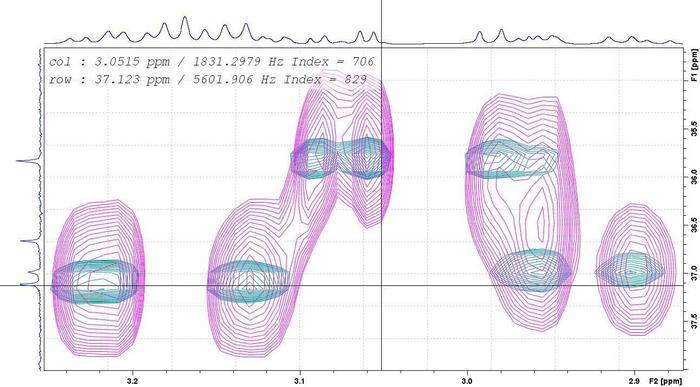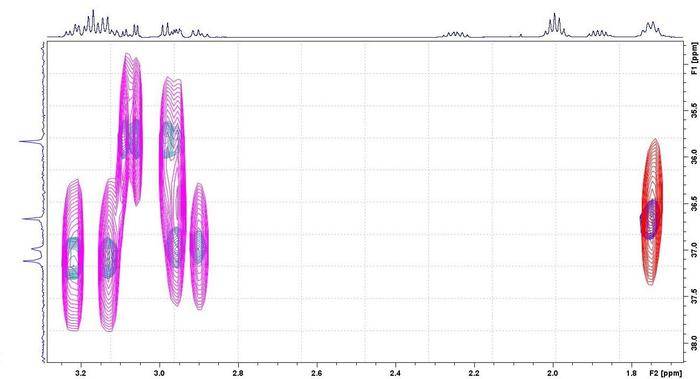Unlike normal 2D experiments where time t1in the second "vertical" dimension is increased gradually in a linear fashion, in non-uniformly sampled (NUS) experiments t1 is changed in a semi-random way. The advantage is that the same level of resolution as in a normal 2D spectrum can be achieved using NUS and significantly less number of t1 increments. Effectively, this means that within the same time we can acquire better resolved 2D spectra using NUS compared to traditional 2D experiments.
An example below shows an overlapping view of 1H-13C HSQC spectra of 16 mM solution of angiotensin in D2O acquired using normal sampling (pink/red) and NUS (green/blue). The total acquisition time for both experiments was just under 8 minutes with 128 t1 values. From the appearance of cross peaks at 2.96 ppm, it is clear that significantly better resolution is achieved in the NUS spectrum. In fact, the normal 2D spectrum in pink shows a false maximum at 2.96-36.5 ppm due to overlapping cross peaks and poor digitisation, which may lead to an erroneous assignment. Also, 13C peaks with small chemical shift difference at 37.0 and 37.1 ppm are easily distinguished in the NUS spectrum.


 Close
Close

